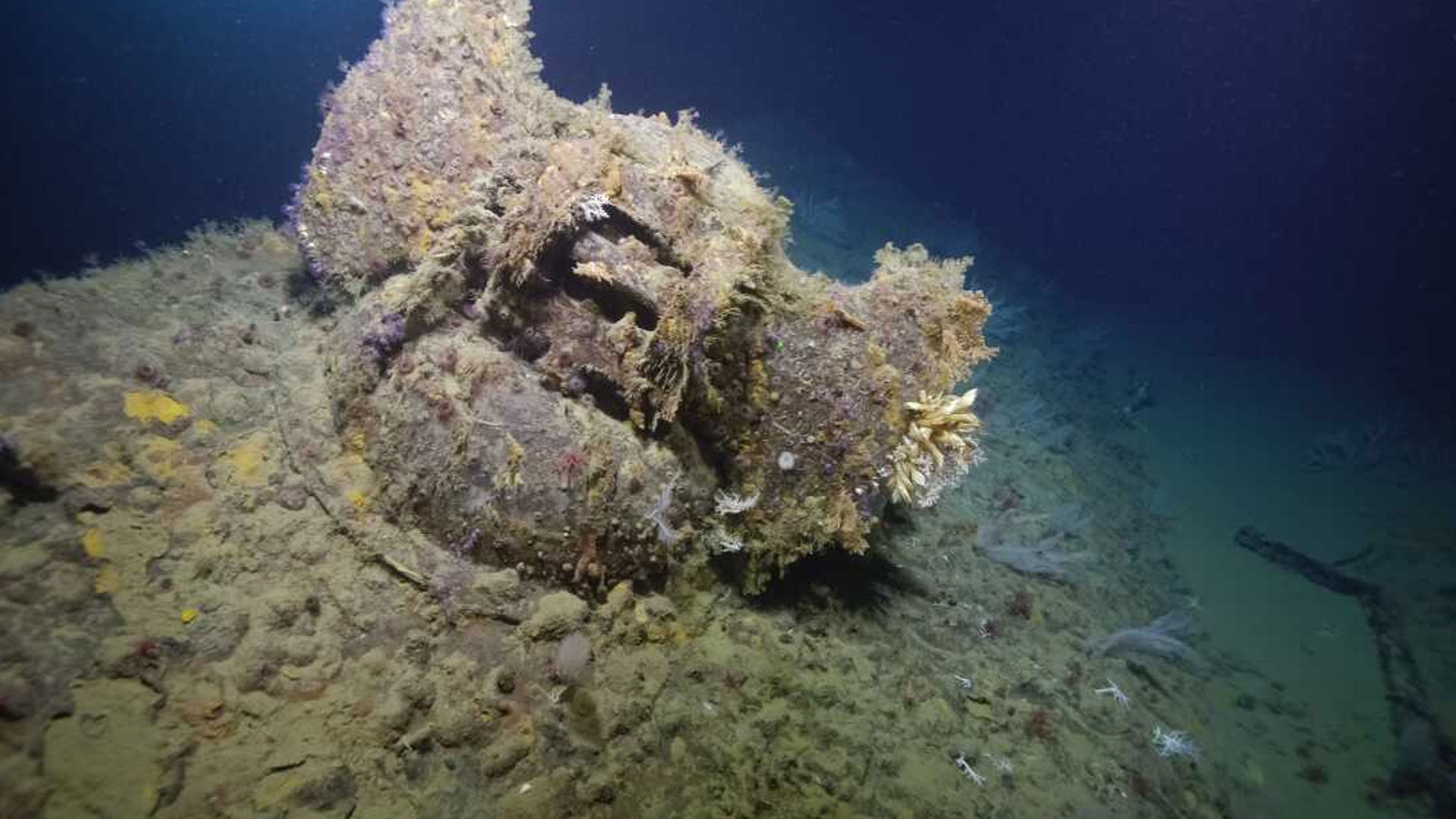 The unique structure and stamps on the base of the anchor, with "Navy Yard" visible through the marine growth, helped confirm the identity of the USS New Orleans' bow.
The unique structure and stamps on the base of the anchor, with "Navy Yard" visible through the marine growth, helped confirm the identity of the USS New Orleans' bow.
Scientists and explorers have found the severed bow of a damaged World War II warship.
A team aboard the Exploration Vessel Nautilus found the USS New Orleans 675 meters deep in the Solomon Islands' Iron Bottom Sound, in the Pacific Ocean.
In November 1942, the USS New Orleans was hit by a Japanese torpedo during the Battle of Tassafaronga, tearing apart one-third of the ship — including the bow — and killing over 180 people.
Despite severe damage and flooding, the crew kept the ship afloat, earning three posthumous Navy Crosses for their actions.
Frank Thompson, the director of the Collection Management Division at the U.S. Navy History and Heritage Command, is a member of the science division that is investigating the USS New Orleans.
Thompson says that they relied on advanced technology like the ROV Hercules — a remotely operated vehicle that can reach deep into oceanic environments — along with archival research, the Navy's previous record and first-hand accounts to find the ship.
"Reading what some of the crews went through gave us an idea of what damage we could look for, what were some of the key points on the wreck to look for as well," Thompson said.
The team found the severed bow by mapping the sea floor using a DriX, a diesel-powered craft that allows them to get data from shallow and deep waters.
With the help of onboard archaeologists and experts from former combatant nations (Japan, Germany and Russia) via livestream, the team identified key features — including the ship's anchor and structural layout — confirming the wreck as the USS New Orleans.
The discovery was broadcast on a 24-hour livestream.
The digital version of this story was edited by Suzanne Nuyen. The radio version of this story was produced by Ana Perez and edited by H.J. Mai.
 NPR NEWS
NPR NEWS
By submitting your comments, you hereby give AZPM the right to post your comments and potentially use them in any other form of media operated by this institution.